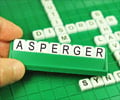The dyslexic brain may have problems in forming perception categories for printed letters and sounds, says a new study. This may lead to the
The dyslexic brain may have problems in forming perception categories for printed letters and sounds, says a new study. This may lead to the dyslexics finding it difficult to filter out visual disturbances that may obscure the pattern of letters in front of them.
The research by the scientists from University of Southern California, US, brings out a new dimension in the nature of the workings of a dyslexic brain.Dyslexia is a learning disorder in an otherwise healthy person. A dyslexic child may have the condition lifelong, although trained helpers may help the child to some extent in coping with classroom work.
The study had found that dyslexic children and normal children perform equally well when there are no visual noises to distract them. This shows that the dyslexic children have difficulty in setting their visual filters to ignore the visual distractions and concentrate on the letters in the front of them. The main problem of dyslexic children, said the study, is in focusing on what is relevant by ignoring the rest in their visual periphery. This theory raises doubt on the previous magnocellular hypothesis that held that dyslexics had inability to process rapidly passing visual signals.
The research is published in the current issue of Nature Neuroscience.








